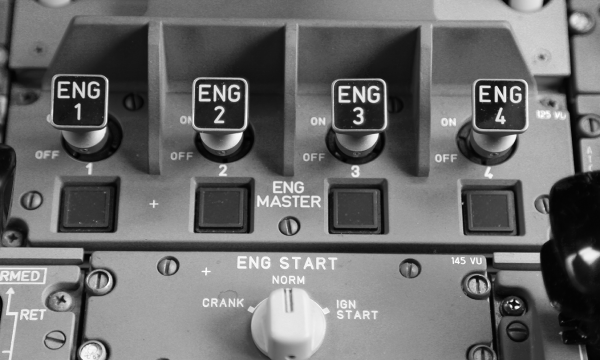So far reserved for only a few.
In the course of the progressive networking and integration of IT systems for the purposes of automation, increasing efficiency, and also gaining knowledge, an essential element is left out for airlines: The fleet. Up to now, direct access to the majority of on-board data is only possible by installing certain components that make this on-board data available to other components, such as Electronic Flight Bags. Most airlines, however, are unaware of the benefits of integrating their aircraft into the company’s IT infrastructure, as they are not aware of the added value of such an investment.
Which data can be recorded at all?
Basically all data that is available on the data buses of the relevant aircraft, such as its position and flight attitude, course and heading, senor data or system states.
Our expertise.
Benjamin Götze, Partner at GMP, examined the question of the value of integrating the fleet as a data source into the IT infrastructure of an airline as head of the aviation research project DAGI “Datalink for Air Ground Intercommunications” funded by the Federal Republic of Germany and involving the German Aerospace Center (DLR), Aerodata AG and airberlin in the years 2012 to 2015.The complete research report can be obtained from the Technical Information Library Hannover, “Deutsche Forschungsberichte” 1.
So far reserved for only a few.
In the course of the progressive networking and integration of IT systems for the purposes of automation, increasing efficiency, and also gaining knowledge, an essential element is left out for airlines: The fleet. Up to now, direct access to the majority of on-board data is only possible by installing certain components that make this on-board data available to other components, such as Electronic Flight Bags. Most airlines, however, are unaware of the benefits of integrating their aircraft into the company’s IT infrastructure, as they are not aware of the added value of such an investment.
Which data can be recorded at all?
Basically all data that is available on the data buses of the relevant aircraft, such as its position and flight attitude, course and heading, senor data or system states.
Why is this data so interesting?
The data can be used, for example, to determine the effectiveness and efficiency of operating procedures. Adherence to operating procedures can also be measured. However, this is not for the purpose of monitoring the behaviour and performance of on-board personnel, but rather as a further feature within the framework of the qualitative evaluation of operating procedures. Under operating procedures are to be understood in this context both Standard Operating Procedures and ground handling processes. In the case of ground handling processes, certain process steps, such as the closing of cargo or passenger doors, can be recorded and, for example, in reference to the Service Level Agreement reprimanded. It is also possible to compare the planned and actual flight trajectory in 4D and draw conclusions about infrastructure problems from a larger number of flights2. Real-time access to aircraft and environmental data also makes it possible to optimize flight planning and improve decision-making in the flight following and in the cockpit. The use of artificial intelligence in conjunction with data mining from on-board and other data allows the recognition of previously unknown correlations as the basis for further optimization and the recognition of deviations from normal conditions, already as a trend. In principle, there are no limits to creativity.
On-Board Data Mining in your company.
GMP analyzes the value of on-board Data Mining for your company and accompanies you from the analysis to the completed implementation.
Our expertise.
Benjamin Götze, Partner at GMP, examined the question of the value of integrating the fleet as a data source into the IT infrastructure of an airline as head of the aviation research project DAGI “Datalink for Air Ground Intercommunications” funded by the Federal Republic of Germany and involving the German Aerospace Center (DLR), Aerodata AG and airberlin in the years 2012 to 2015 1.
_____________________________
[1] Götze, Benjamin and Scheffer, Gerhard (2016). Datalink for Air Ground Intercommunication, Technische Informationsbibliothek (TIB) – German Research Reports
[2] A flight level survey conducted by airberlin various undocumented level cappings and transfer altitudes between Air Traffic Control (ATC) sectors that were not known to the airlines and could therefore not be taken into account in flight planning, with the result that flights were carried out more inefficiently than planned. Similarly, regular deviations between the planned speed and the actual speed required by ATC could be detected, which also had a negative impact on the efficiency of flight operations. In cooperation with ATC, the planning basis for the airlines was optimized and individual improvements were made to the airspace.







